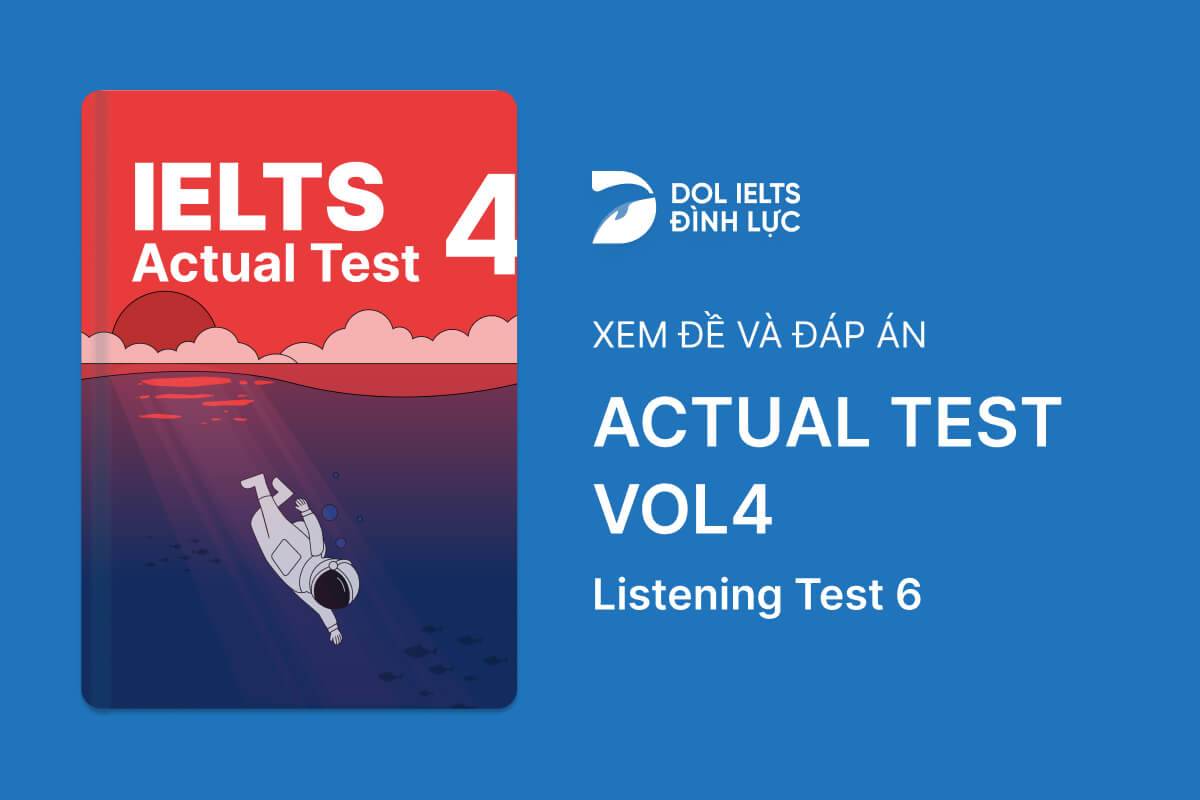Đề thi IELTS Online Test Actual Test 4 - Listening Test 6 - Download PDF Câu hỏi, Transcript và Đáp án
Luyện tập đề IELTS Online Test IELTS Actual Test 4 - Listening Test 6 được lấy từ cuốn sách IELTS Actual Test 4 với trải nghiệm thi IELTS trên máy và giải thích đáp án chi tiết bằng Linearthinking, kèm answer key và list từ vựng IELTS cần học trong bài đọc.
Section
👂️ Bài nghe section 1
❓ Tapescript section 1
🔥 Đáp án & giải thích section 1
Giải thích chi tiết
 Đáp án cần điền là tên riêng (Peter Adrien ___ )
Đáp án cần điền là tên riêng (Peter Adrien ___ )
=> Đáp án sẽ đến sau "What's your full name?"
 Peter đã trả lời tên anh ta là "Peter Adrian Camden" Sau đó Will "How do you spell Camden?"
Peter đã trả lời tên anh ta là "Peter Adrian Camden" Sau đó Will "How do you spell Camden?"
=> Yêu cầu Peter đánh vần tên mình ra "C-A-M-D-E-N"
=> Đáp án: Camden 
Section
👂️ Bài nghe section 2
❓ Tapescript section 2
🔥 Đáp án & giải thích section 2
Giải thích chi tiết
 Cần tìm lí do mà mọi người cần truyền máu
Cần tìm lí do mà mọi người cần truyền máu
=> Đáp án sẽ có sau ''The need for blood is great''
 Rồi liệt kê, đầu tiên là "Blood tranfusions are often needed for victims of accidents and burns,"
Rồi liệt kê, đầu tiên là "Blood tranfusions are often needed for victims of accidents and burns,"
=> Nạn nhân của tai nạn và bị bỏng cần truyền máu
=> Đáp án: accidents/burns 
Section
👂️ Bài nghe section 3
❓ Tapescript section 3
🔥 Đáp án & giải thích section 3
Giải thích chi tiết
Đối tượng là người được truy cập vào "other computer labs", ngoài "postgraduates"
 Theo thứ tự, mình sẽ nghe về undergraduates trước
Theo thứ tự, mình sẽ nghe về undergraduates trước
=> Đáp án sẽ có sau ''There are 4 computer labs open to undergraduates.''
 Sau đó, "The others can only be used by the staff and postgraduates"
Sau đó, "The others can only be used by the staff and postgraduates"
Section
👂️ Bài nghe section 4
French TGV locomotives pull the T6V trains from both ends using a
36Japanese ground is unsuitable for the TGV type of train because it is
and the tracks frequently curve horizontally and vertically.37An extra advantage of the Japanese electric car system is that it can act as a
38Even after the power supply is cut off in the electric car system, electricity is still produced by
39Huge improvements in power, operability and safety administration have been made possible by advances in
40
❓ Tapescript section 4
🔥 Đáp án & giải thích section 4
Giải thích chi tiết
Mình cần nghe xem tàu bắt đầu được đưa vào sử dụng khi nào
 Mục đầu tiên là safety
Mục đầu tiên là safety
=> Đáp án sẽ có sau ''As regards safety, ...''
 Mình nghe được là ''As regards safety, there has never been a death on the bullet train system since it’s inception in 1964''
Mình nghe được là ''As regards safety, there has never been a death on the bullet train system since it’s inception in 1964''
=> Không có người tử vong khi dùng tàu siêu tốc từ năm 1964 (inception = launch)
=> Đáp án là 1964 


